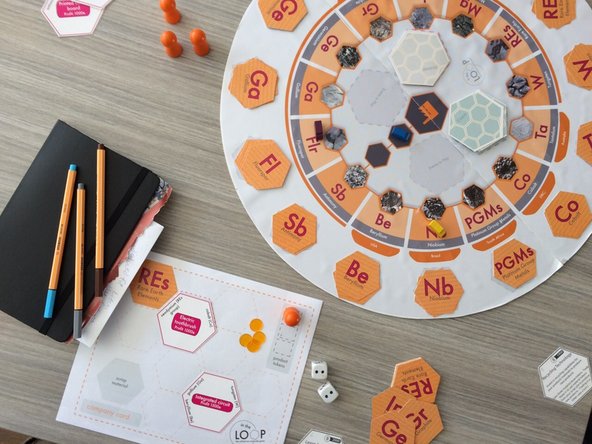Ever wonder where something like an iPhone 7 comes from before it winds up on the shelf? Sure they’re sleek, but electronics are also notoriously complex to manufacture—because so many difference types of materials go into them. Of the 118 elements on the periodic table, at least 70 can be found in cell phones. The supply chain for electronics criss-crosses all over the globe. Now, a new game helps you unravel it.

Thanks to Katie Whalen, an Industrial Design Engineering graduate of TU Delft, learning some of the factors in our supply chains is as easy as the roll of the dice. The board game she designed is called “In the Loop” and it aims to help players understand with the systems (and challenges) surrounding the materials we use in consumer goods like electronics.
Over the course of about an hour, players create product as a manufacturer would—while encountering real world constraints like supply restrictions and volatile markets. Players have to bid for and collect precious resources to make the products they need, choose business and production strategies, and respond to world events that may impact the supply or production of goods. All while trying to beat out the competition.
The game also gives bonuses for sustainable practices, like recycling and reuse. While a game can’t replicate real-world complexities perfectly, many factors—such as supply restrictions and less-than-savory business practices—are modeled in the game.
The game was designed to start a conversation about our how we handle our ever-scarcer resources. Because the more we talk about and try to understand these things, the more likely we all are to become winners in the end.
Now that the game is out of its Kickstarter phase and into production, it’s easy to pick up a copy for the classroom or your coffee table—just be prepared for global supply chains to get a bit, dare we say it, dicey.





0 opmerkingen